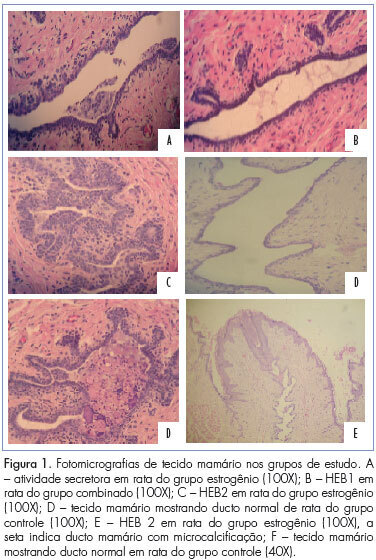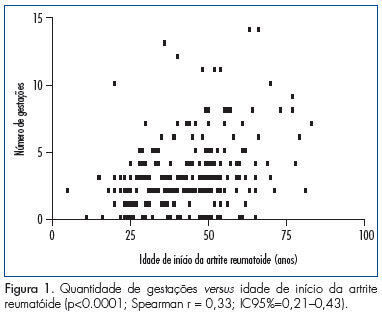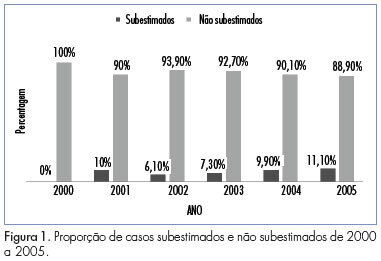Summary
Revista Brasileira de Ginecologia e Obstetrícia. 2011;33(7):143-149
DOI 10.1590/S0100-72032011000700005
PURPOSE: To determine the main contraceptive methods adopted by users of the public and private health sectors in the city of Aracaju (SE), Brazil, with a secondary focus on orientations for their use and reasons for interruption. METHODS: A cross-sectional study was conducted on 210 women, 110 from the public service and 100 from the private sector. The data were collected by applying a questionnaire to sexually active patients who agreed to sign a consent form. The software Statistical Package for Social Sciences (SPSS) version 15.0 was used for statistical analysis, with the ![]() test for categorical variables and the Student's t-test for independent samples. RESULTS: The overall prevalence of contraceptive use in this study was 83.3%. The main methods used in the public and private sectors, were the hormonal (41 and 24%, p=0.008) and permanent (20 and 26%, p=0.1) ones, respectively. The rate of condom use was 17.3% in the public sector and 12% in the private sector, with no significant difference (p=0.12). Medical orientation about the correct use of the method chosen and/or indicated was provided to 37.3% of users from the public sector and to 48% of users from the private sector. Discontinuation of the use of contraceptive methods was 14.5% in the public sector and 12.0% in the private sector, mainly because of side effects and the desire to become pregnant. CONCLUSIONS: The main contraceptive methods adopted by users of the public and private sectors were hormonal contraception and permanent contraception. It is important to highlights the low frequency of use of male condoms in the two groups studied.
test for categorical variables and the Student's t-test for independent samples. RESULTS: The overall prevalence of contraceptive use in this study was 83.3%. The main methods used in the public and private sectors, were the hormonal (41 and 24%, p=0.008) and permanent (20 and 26%, p=0.1) ones, respectively. The rate of condom use was 17.3% in the public sector and 12% in the private sector, with no significant difference (p=0.12). Medical orientation about the correct use of the method chosen and/or indicated was provided to 37.3% of users from the public sector and to 48% of users from the private sector. Discontinuation of the use of contraceptive methods was 14.5% in the public sector and 12.0% in the private sector, mainly because of side effects and the desire to become pregnant. CONCLUSIONS: The main contraceptive methods adopted by users of the public and private sectors were hormonal contraception and permanent contraception. It is important to highlights the low frequency of use of male condoms in the two groups studied.
Summary
Revista Brasileira de Ginecologia e Obstetrícia. 2011;33(7):137-142
DOI 10.1590/S0100-72032011000700004
PURPOSE: To evaluate the efect of trimegestone on the histological changes of the mammary tissue of castrated rats. METHODS: Forty-five virgin female Wistar rats were used after oophorectomy. Sixty days after surgery, with hypoestrogenisms confirmed, the experimental rats were randomly assigned to three groups of 15 animals each, when then the specific treatment for each group was started. The control group (C) and experimental groups 1 and 2 respectively received 0.9% saline solution, 17-beta-estradiol and 17-beta-estradiol in combination with trimegestone for 60 consecutive days. After the end of treatment , the inguinal mammary glands were removed, stained with hematoxylin and eosin (HE) for morphometry and examined by immunohistochemistry for the quantification of anti-PCNA antibody in the mammary tissue, followed by euthanasia. The morphometric parameters evaluated were: epithelium cell-proliferation, secretor activity and mammary stroma changes. There were nine deaths during the experiment. The variables were submitted to statistical analysis adopting the 0.05 level of significance. RESULTS:Histological changes were observed in 16/36 rats, mild epithelial hyperplasia in 13/36, moderate epithelial hyperplasia in 3/36, with no cases of severe epithelial hyperplasia. Stromal fibrosis was found in 10/36 and secretory activity in 5/36 rats. All morphometric variables were significant in the estrogen group compared to control (p=0.0361), although there were no difference between the group receiving combined treatment and the controls (p=0.405). The immunohistochemical analysis showed no difference between groups. CONCLUSIONS:The hormones administered to castrated rats, i.e., 17 beta-estradiol alone or in combination with trimegestone, increased the proliferation of breast cells, but this effect appeared to be lower in the combined treatment, the same occurring regarding fibrosis of the mammary stroma.

Summary
Revista Brasileira de Ginecologia e Obstetrícia. 2011;33(7):132-136
DOI 10.1590/S0100-72032011000700003
PURPOSE: To study if rheumatoid arthritis (RA) is influenced by age at menarche, number of pregnancies and reproductive life span. METHODS: This was a cross-sectional and retrospective study of medical records of 247 RA patients. We collected data on menarche, menopause, number of pregnancies, autoantibodies, serositis, rheumatoid nodules, and functional index of Steinbrocker. Association studies were done using the Student t and Mann-Whitney tests and correlation was determined by the Pearsonand Spearman tests. The level of significance adopted was 5%. RESULTS: The mean age at diagnosis of RA was 43.2±14.1 years, the median age at menarche was 13 years and the median number of pregnancies was 3. Rheumatoid factor was present in 63.9% of the patients, 20% had antinuclear factor, 8.8% rheumatoid nodules, 2.8% had pleural effusion, and 2.4% had pericarditis. The Steinbrocker functional index showed that 45.6% had a score of 1, 40.8% a score of 2, 3 score of 9.1, and 4.3% a score of 4. We found an inverse correlation between the number of pregnancies and age at onset of RA (p CONCLUSION: A precocious menarche and brief reproductive life indicate a poor prognosis regarding pleurisy. A larger number of pregnancies and late menopause show a protective effect, delaying the onset of the disease.

Summary
Revista Brasileira de Ginecologia e Obstetrícia. 2011;33(7):123-131
DOI 10.1590/S0100-72032011000700002
PURPOSE: To determine the rate of underestimation of an image-guided core biopsy of nonpalpable breast lesions, with validation by histologic examination after surgical excision. METHODS: We retrospectively reviewed 352 biopsies from patients who were submitted to surgery from February 2000 to December 2005, and whose histopathologic findings were recorded in the database system. Results were compared to surgical findings and underestimation rate was determined by dividing the number of lesions that proved to be carcinomas at surgical excision by the total number of lesions evaluated with excisional biopsy. Clinical, imaging, core biopsy and pathologic features were analyzed to identify factors that affect the rate of underestimation. The degree of agreement between the results was obtained by the percentage of agreement and Cohen's kappa coefficient. The association of variables with the underestimation of the diagnosis was determined by the chi-square, Fisher exact, ANOVA and Mann-Whitney U tests. The risk of underestimation was measured by the relative risk (RR) together with the respective 95% confidence intervals (95%CI). RESULTS: Inconclusive core biopsy findings occurred in 15.6% of cases. The histopathological result was benign in 26.4%, a high-risk lesion in 12.8% and malignant in 45.2%. There was agreement between core biopsy and surgery in 82.1% of cases (kappa=0.75). The false-negative rate was 5.4% and the lesion was completely removed in 3.4% of cases. The underestimation rate was 9.1% and was associated with BI-RADS® category 5 (p=0,01), microcalcifications (p CONCLUSIONS: The core breast biopsy under image guidance is a reliable procedure but the recommendation of surgical excision of high-risk lesions detected in the core biopsy remains since it was not possible to assess clinical, imaging, core biopsy and pathologic features that could predict underestimation and avoid excision. Representative samples are much more important than number of fragments.

Summary
Revista Brasileira de Ginecologia e Obstetrícia. 2011;33(5):231-237
DOI 10.1590/S0100-72032011000500005
PURPOSE: To investigate the relationship between quality of life and spinal fracture in women aged over 60 living in Southern Brazil. METHODS: A case-control study was conducted with the application of the WHOQOL-bref questionnaire to 100 women living in the city of Chapecó (SC), aged over 60, postmenopausal, white or Caucasian, with no important cognitive impairment or a history of diseases known to affect bone metabolism, or malignant neoplasias. The population was divided into two groups depending on the presence or absence of fractures in the spine radiography. We analyzed variables related to the current and previous medical history, life habits and family history of fractures, and the domains and facets that compose the WHOQOL-bref. All participants were informed about the objectives and methodologies adopted and gave written informed consent to participate in the study. RESULTS: The mean age of the women in the fracture group was older than that of women with fractures (p<0.05). Also women with fractures tended to belong to a higher social class, to have more years of study, a higher family income, and a greater use of alcoholic drinks (p<0.05). In the evaluation of the WHOQOL-bref domains, the fracture group had the highest average in the psychological field (..=63.6± 3.0) and the lowest in the environment field (..=9.3±58.8). In the group without fracture, the highest average also occurred in the psychological domain (..=67.2± 9.3) and the lowest in the field of social relations (..=57.5±7.7). Statistical analysis showed no significant correlation between the averages of the facets that make up the areas between the groups with and without fractures. CONCLUSIONS: This study suggests that there is no impairment of quality of life among older women with vertebral fractures, but the relation between QL and time of occurrence and severity of the fractures should be better evaluated. Both groups had higher scores in the psychological domain, showing that the respondents rely on personal beliefs, spirituality and religion, accept their physical appearance while maintaining self-esteem and the ability to think, to learn and to concentrate despite the presence of this disease. There was no statistically significant difference between groups or between domains in the same group.
Summary
Revista Brasileira de Ginecologia e Obstetrícia. 2011;33(6):271-275
DOI 10.1590/S0100-72032011000600002
PURPOSE: to investigate the association between gene polymorphism of the progesterone receptor (PROGINS) and the risk of premature birth. METHODS: In this case-control study, 57 women with previous premature delivery (Case Group) and 57 patients with delivery at term in the current pregnancy and no history of preterm delivery (Control Group) were selected. A 10 mL amount of peripheral blood was collected by venipuncture and genomic DNA was extracted followed by the polymerase chain reaction (PCR) under specific conditions for this polymorphism and 2% agarose gel electrophoresis. The bands were visualized with an ultraviolet light transilluminator. Genotype and allele PROGINS frequencies were compared between the two groups by the χ2 test, with the level of significance set at value p<0.05. The Odds Ratio (OR) was also used, with 95% confidence intervals. RESULTS: PROGINS genotypic frequencies were 75.4% T1/T1, 22.8% T1/T2 and 1.8% T2/T2 in the Group with Preterm Delivery and 80.7% T1/T1, 19.3% T1/T2 and 0% T2/T2 in the term Delivery Group. There were no differences between groups when genotype and allele frequencies were analyzed: p=0.4 (OR=0.7) and p=0.4 (OR=0.7). CONCLUSIONS: the present study suggests that the presence of PROGINS polymorphism in our population does not constitute a risk factor for premature birth.
Summary
Revista Brasileira de Ginecologia e Obstetrícia. 2011;33(6):310-316
DOI 10.1590/S0100-72032011000600008
PURPOSE: To compare the metabolic characteristics of obese and non-obese young women with polycystic ovary syndrome (POS) from the Brazilian Southeast. METHODS: This was a cross-sectional study conducted on 218 women of reproductive age with a diagnosis of POS - 90 non-obese women (BMI between 18.5 and 29.9 kg/m²), and 128 obese patients (BMI >30 kg/m²) selected at the time of diagnosis. The frequency of insulin resistance (IR), glucose intolerance (GI), metabolic syndrome (MetS) and type 2 diabetes mellitus (DM2) and mean values of total cholesterol (TC), triglycerides (TG), high-density (HDL) and low-density lipoproteins (LDL), were compared between obese and non-obese patients with POS. The two groups were also compared in terms of clinical and hormonal characteristics (follicle stimulating hormone, prolactin, thyroid stimulating hormone, total testosterone, dihydroepiandrostenedione sulfate, and 17-hydroxyprogesterone). Statistical analysis was performed using the SAS 9.0 software. Quantitative variables were compared by the Student´s t-test (data with normal distribution) or by the Mann-Whitney test (non-parametric distribution). Qualitative variables were compared by the Fisher test. The level of significance was set at 5% (p<0.05) in all analyses. RESULTS: The frequency of IR, GI and MetS was significantly higher in obese than non-obese patients with POS (66.7, 29.9, and 63% versus 24.7, 12.2, and 16.4%, respectively). Obese patients had higher TC and TG levels (189.8±35.8 mg/dL and 145.4±71.1 mg/dL, respectively) than non-obese patients (172.1±38.4 mg/dL and 99.3±54 mg/dL, respectively). Both groups had mean HDL levels below 50 mg/dL. CONCLUSIONS: Young obese women with POS have a higher frequency of IR, GI and MS than non-obese. However, the occurrence of metabolic disorders is elevated also in the non-obese patients, suggesting that the presence of the syndrome may favor the development of metabolic comorbidities with potential medium- and long-term repercussions.
Summary
Revista Brasileira de Ginecologia e Obstetrícia. 2011;33(6):303-309
DOI 10.1590/S0100-72032011000600007
PURPOSE: Due to the scarce information available in Brazil in relation to the number of women who initiated the use of combined oral contraceptives and prematurely discontinued, the objective was to assess the reasons for discontinuation of the use of several combined oral contraceptives among Brazilian women living in urban areas. METHODS: A cross-sectional study with 400 gynecologists registered withy the Brazilian Federation of Obstetricians and Gynecologists. Each physician interviewed 10 non-pregnant, not breastfeeding, not amenorrheic women aged 18 to 39 years who consulted requesting combined oral contraceptive (COC) with a questionnaire at the beginning of use and at six months later. The questionnaire included sociodemographic data, type of COC chosen or prescribed and reasons for discontinuation when it occurred during follow-up. The strategy of selection allowed the inclusion of women from different socioeconomic strata, however, only those attended at private or insurance offices. The sample size was estimated at 1,427 women. RESULTS: A total of 3,465 interviews were conducted at the first visit and 1,699 six months later. The women were 20 to 29 years old, 57.3% were single and an equal proportion of 45.0% attended high school or college. Most (60.7%) were nulligravidas and among those who had used some contraceptive before, 71.8% had used a COC. Among the more prescribed or chosen COC the most prevalent were monophasic with ethynil estradiol (20 µg) and regarding progestin the most prevalent was with gestodene (36.5%) followed by a COC with drosperinone (22.0%). At six months 63.5% still used COC. Among those who discontinued the main reasons were wishing to become pregnant (36.5%) and side effects (57.3%) and the most prevalent were headache (37.6%), weight gain (16.6%) and irregular bleeding (23.6%). CONCLUSIONS: The continuation rate of COC was low at six months and this study could contribute to a better counseling on the part of physicians of patients who initiate COC about side-events that are rare, minimal and temporary and about the benefits of COC use.